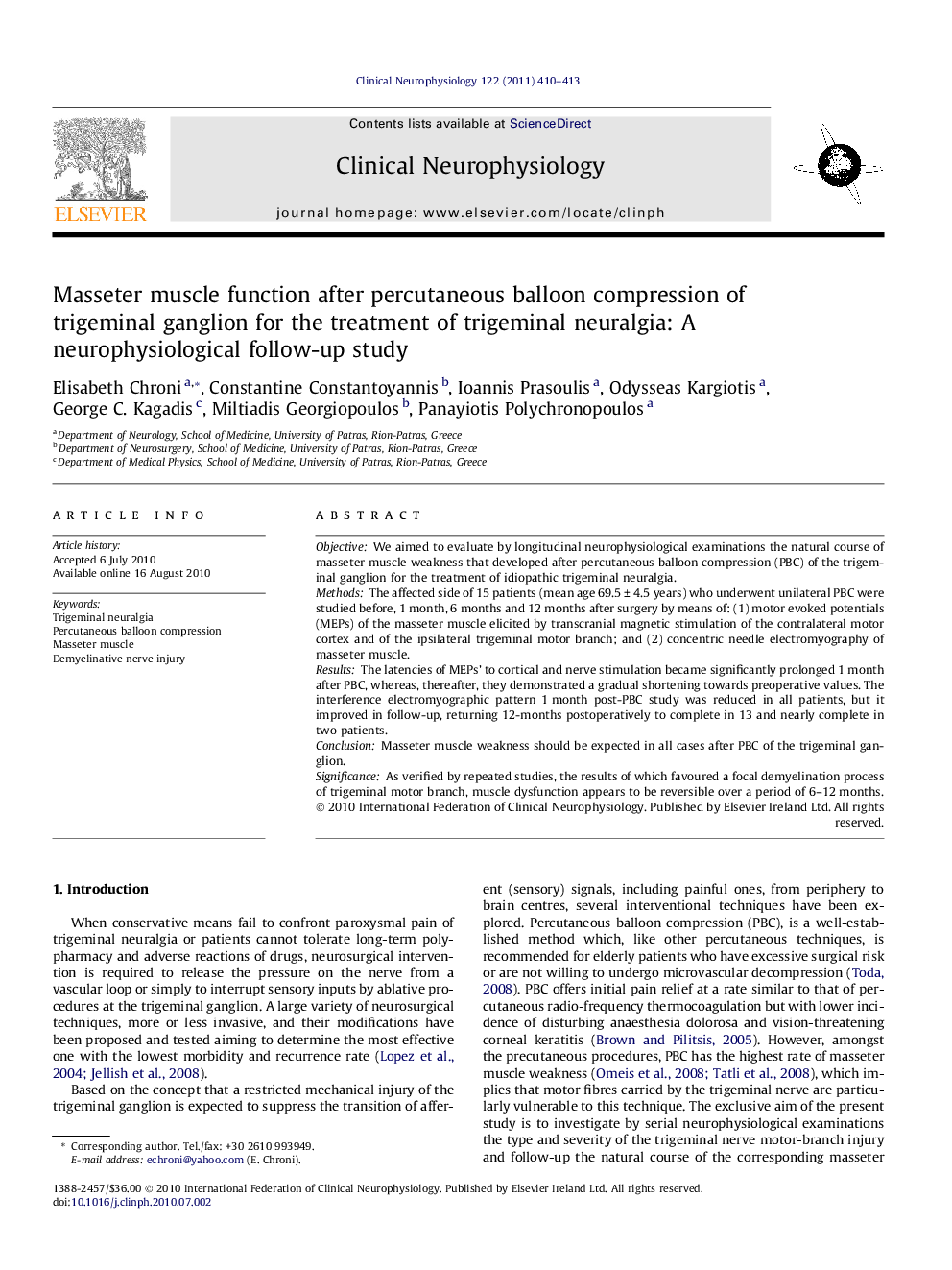| Article ID | Journal | Published Year | Pages | File Type |
|---|---|---|---|---|
| 3044995 | Clinical Neurophysiology | 2011 | 4 Pages |
ObjectiveWe aimed to evaluate by longitudinal neurophysiological examinations the natural course of masseter muscle weakness that developed after percutaneous balloon compression (PBC) of the trigeminal ganglion for the treatment of idiopathic trigeminal neuralgia.MethodsThe affected side of 15 patients (mean age 69.5 ± 4.5 years) who underwent unilateral PBC were studied before, 1 month, 6 months and 12 months after surgery by means of: (1) motor evoked potentials (MEPs) of the masseter muscle elicited by transcranial magnetic stimulation of the contralateral motor cortex and of the ipsilateral trigeminal motor branch; and (2) concentric needle electromyography of masseter muscle.ResultsThe latencies of MEPs’ to cortical and nerve stimulation became significantly prolonged 1 month after PBC, whereas, thereafter, they demonstrated a gradual shortening towards preoperative values. The interference electromyographic pattern 1 month post-PBC study was reduced in all patients, but it improved in follow-up, returning 12-months postoperatively to complete in 13 and nearly complete in two patients.ConclusionMasseter muscle weakness should be expected in all cases after PBC of the trigeminal ganglion.SignificanceAs verified by repeated studies, the results of which favoured a focal demyelination process of trigeminal motor branch, muscle dysfunction appears to be reversible over a period of 6–12 months.
